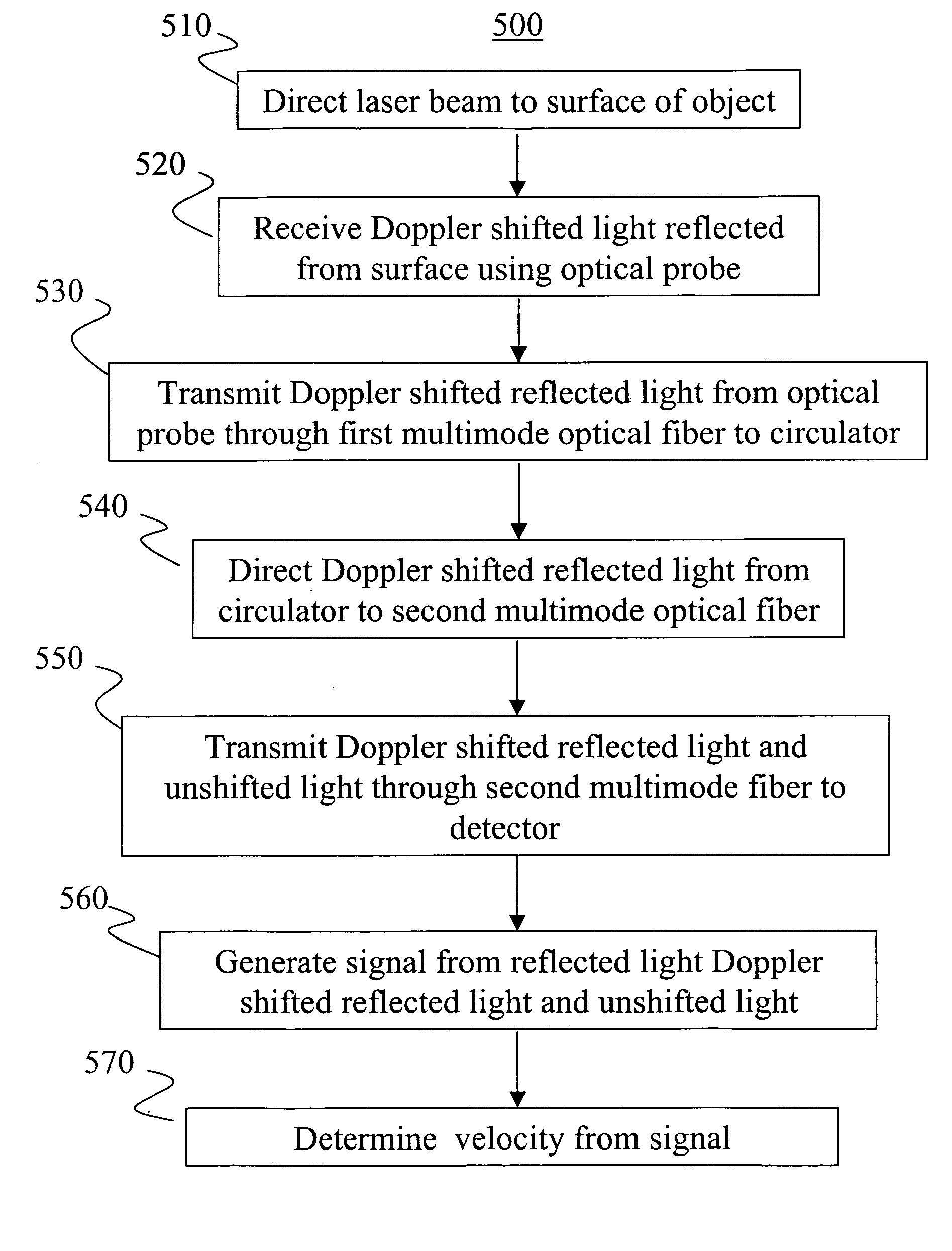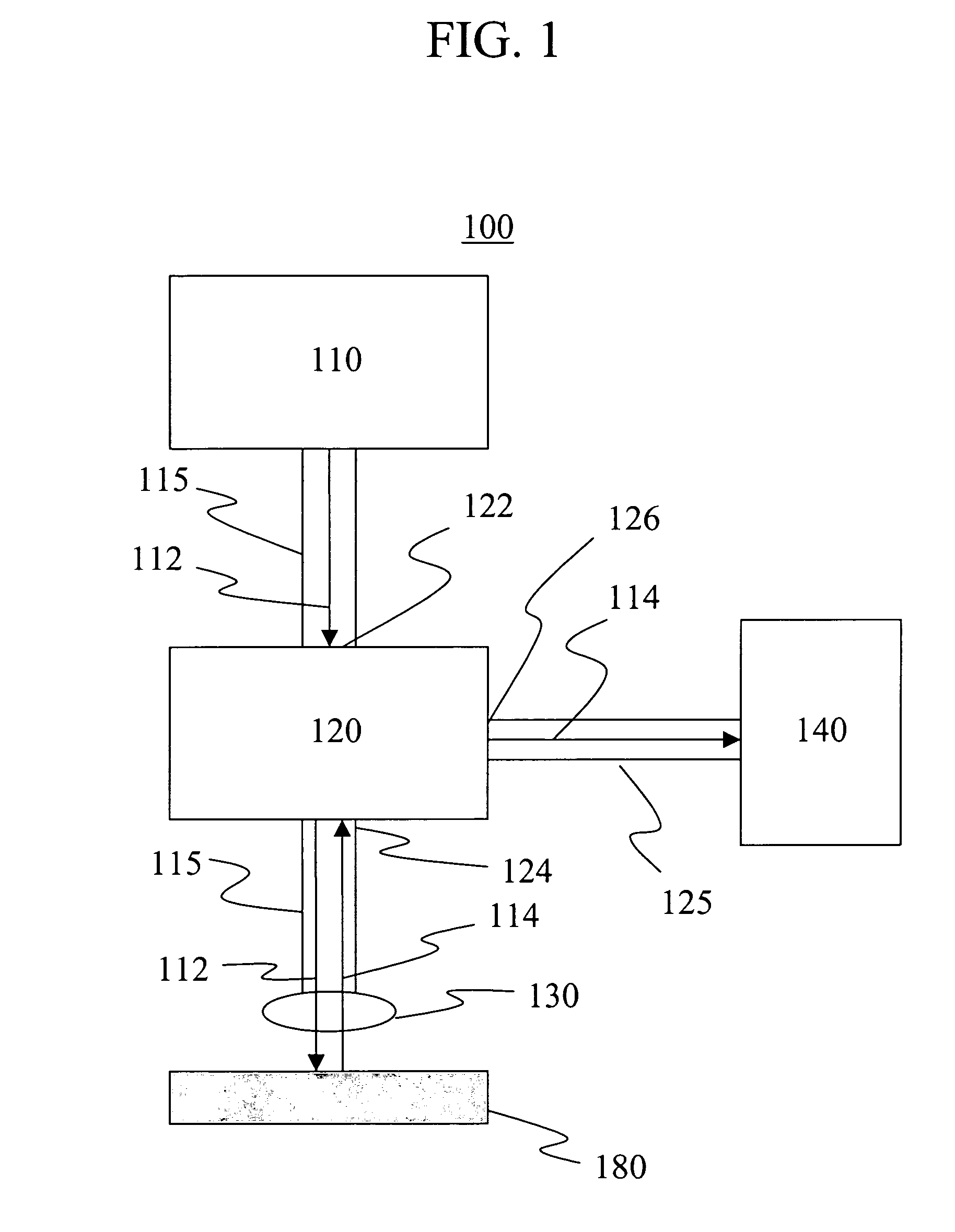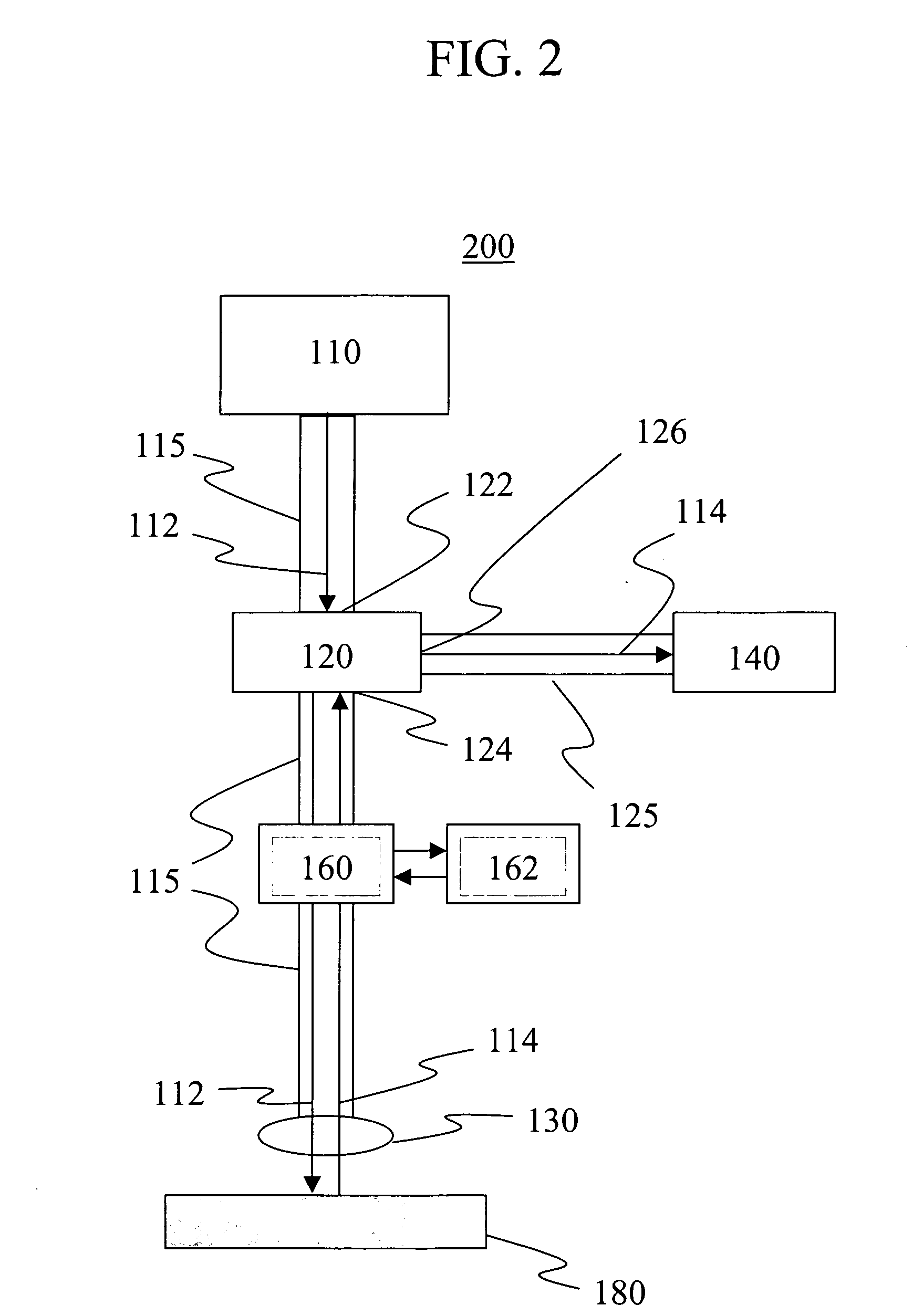Laser velocimetry system
a velocity measurement and laser technology, applied in the direction of speed/acceleration/shock measurement, measurement devices, instruments, etc., can solve the problems of inability to easily adapt current velocity measurement techniques to applications, large instrumentation size, and high field cos
- Summary
- Abstract
- Description
- Claims
- Application Information
AI Technical Summary
Benefits of technology
Problems solved by technology
Method used
Image
Examples
example 1
[0038]A laser velocimetry system such as that described hereinabove was constructed using the following components: a laser photodiode (JDS Uniphase Model CQF938 / 600) having a wavelength of 1550 nm; an optical circulator (Agiltron Part #OC-30511223) using a graded index multimode fiber; and a photodiode detector and amplifier (Miteq Model SCMR-50K6G-30-15-10-MM).
[0039]Using the above components, a moving metal foil was viewed with a bare fiber probe. The foil was viewed through the probe from a distance of several millimeters. Motion of the foil was induced by lightly tapping the foil. The data was obtained using the velocimetry system and the velocity of the foil was determined.
[0040]Samples of the data obtained from the experiment are shown in FIGS. 6, 7, and 8. The raw recorded data is shown in FIG. 6, and Figure FIG. 7 shows an expanded portion of FIG. 6 near the time of first motion. The velocities were then determined using the Short Time Fourier Transform method. The velociti...
PUM
 Login to View More
Login to View More Abstract
Description
Claims
Application Information
 Login to View More
Login to View More - R&D
- Intellectual Property
- Life Sciences
- Materials
- Tech Scout
- Unparalleled Data Quality
- Higher Quality Content
- 60% Fewer Hallucinations
Browse by: Latest US Patents, China's latest patents, Technical Efficacy Thesaurus, Application Domain, Technology Topic, Popular Technical Reports.
© 2025 PatSnap. All rights reserved.Legal|Privacy policy|Modern Slavery Act Transparency Statement|Sitemap|About US| Contact US: help@patsnap.com



